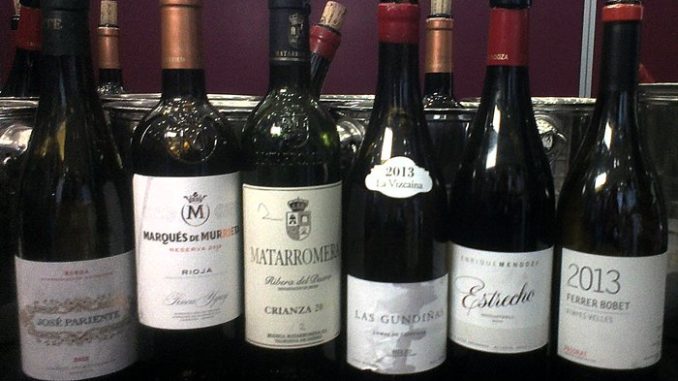
By Jim Boyce | Spain is in a tricky spot when it comes to the China wine market. In terms of volume, it has seen quick growth over the past five years and now competes with Australia and Chile for second place as a source of imported bottled wine. (France is far and away the leader.) But value is a far different story. Of the top ten sources, Spain easily has the lowest declared value per bottle, according to Customs. Put another way, last year Spain had a 15 percent share of the imported bottled wine market by volume but only 6 percent by value.
Given the rich tapestry of wine made in Spain, it’s not a quality issue. But in a market built on a French-first mentality, Spain has found it tough to become another “old world” option that can command good prices in China. There are quality importers like Torres, Pasion and Sommelier International working to change that but there is much more do do.
Part of the solution is simply exposing more people to diverse high-quality Spanish wines. The Spanish Embassy, backed by ICEX and the European Union, organized such an event last week at the Interwine fair in Beijing. Led by Eduardo de la Fuente and Johnny Wu, the packed seminar featured wine from six regions—Alicante, Bierzo, Priorat, Ribera del Duero, Rioja and Rueda.
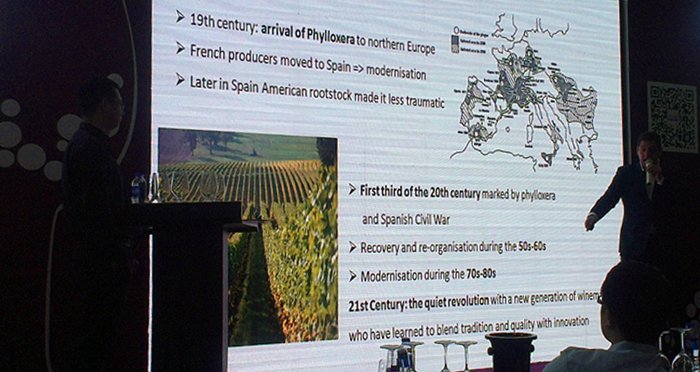
The pair briefly covered Spanish wine history, from the Phoenicians who introduced the craft nearly 3,000 years ago to the ongoing “quiet revolution” that is now pushing quality. De la Fuente also touched on the Noah Gordon novel La Bodega—English title: The Winemaker—about a man who escapes to France from Spain around 1870 for political reasons, learns to make wine in Languedoc, and eventually returns to take over the family farm in Catalan and produce something far superior to the plonk made by his father. He cites the novel as symbolizing the history of that era, a history that includes the phylloxera crisis and strong French influences.
The presenters then methodically looked at each wine and its region, including when it was recognized, its typical grapes and its geography, with lots of talk about the influence of different soils and continental, Atlantic and Mediterranean climates. Only two places have the highest regional recognition, that being DOCa (Denominación de Origen Calificada), with Rioja elevated in 1991 (it became a DO in 1926) and Priortat in 2006 (a DO in 1954).
It was fun to contrast the wines and to try grapes beyond the usual Cabernets, Merlots, Chardonnays et al in China, grapes like Mencia, Graciano and Verdejo. The wines included José Pariente Barrica 2012, Marqués de Murrieta Reserva 2012, Matarromera Crianza 2012, La VizcaÃna-Las Gundiñas 2013, Estrecho 2014 and Ferrer Bobet Vinyes Velles 2013.
While I enjoyed all six wines, my two favorites were Gundiñas and Ferrer Bobet. The former is made in Bierzo by Raul Perez, is 90 percent Mencia and 10 percent other grapes, and is fermented in 5000-liter “timber vats” before being aged 12 months in French oak. It is juicy and fragrant with wild berries and, after some breathing, licorice and smoke. De la Fuente said the region is considered “the Burgundy of Spain.”
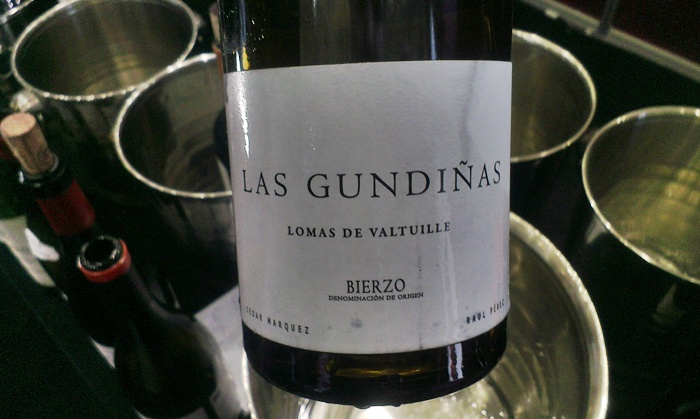
Ferrer Bobet, from Priorat, is 70 percent Carinena and 30 percent Garnacha. Although aged longer in oak (15 months) than some of the other wines, I found it had the purest fruit. I was surprised to find it so light, fresh, buoyant—maybe the word is “playful”?
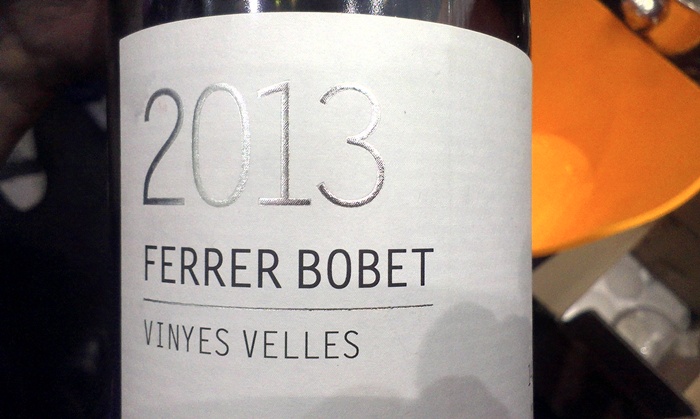
Again, all of these wines were enjoyable and I would be happy to drink any of them again. And maybe I should: I had a wicked hangover that day and probably need a second tasting to make sure my notes are accurate!
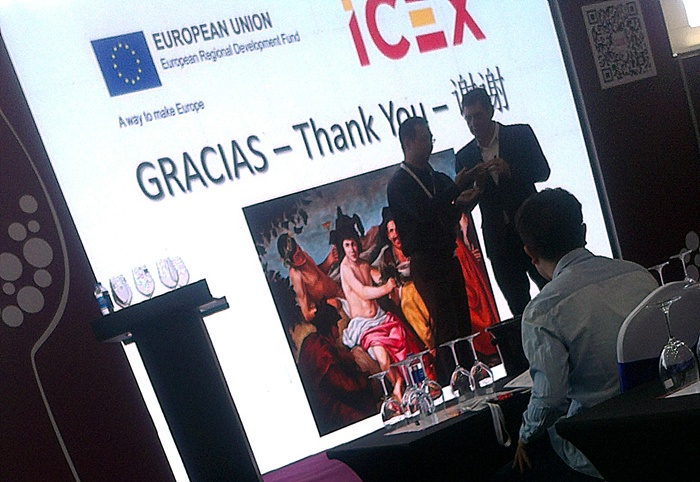
Follow Grape Wall on Facebook and Twitter. Sign up for the free China wine newsletter below. And check out sibling sites World Baijiu Day and Beijing Boyce.
Grape Wall has no sponsors of advertisers: if you find the content and projects like World Marselan Day worthwhile, please help cover the costs via PayPal, WeChat or Alipay.
Sign up for the free Grape Wall newsletter here. Follow Grape Wall on LinkedIn, Instagram, Facebook and Twitter. And contact Grape Wall via grapewallofchina (at) gmail.com.

Leave a Reply
You must be logged in to post a comment.